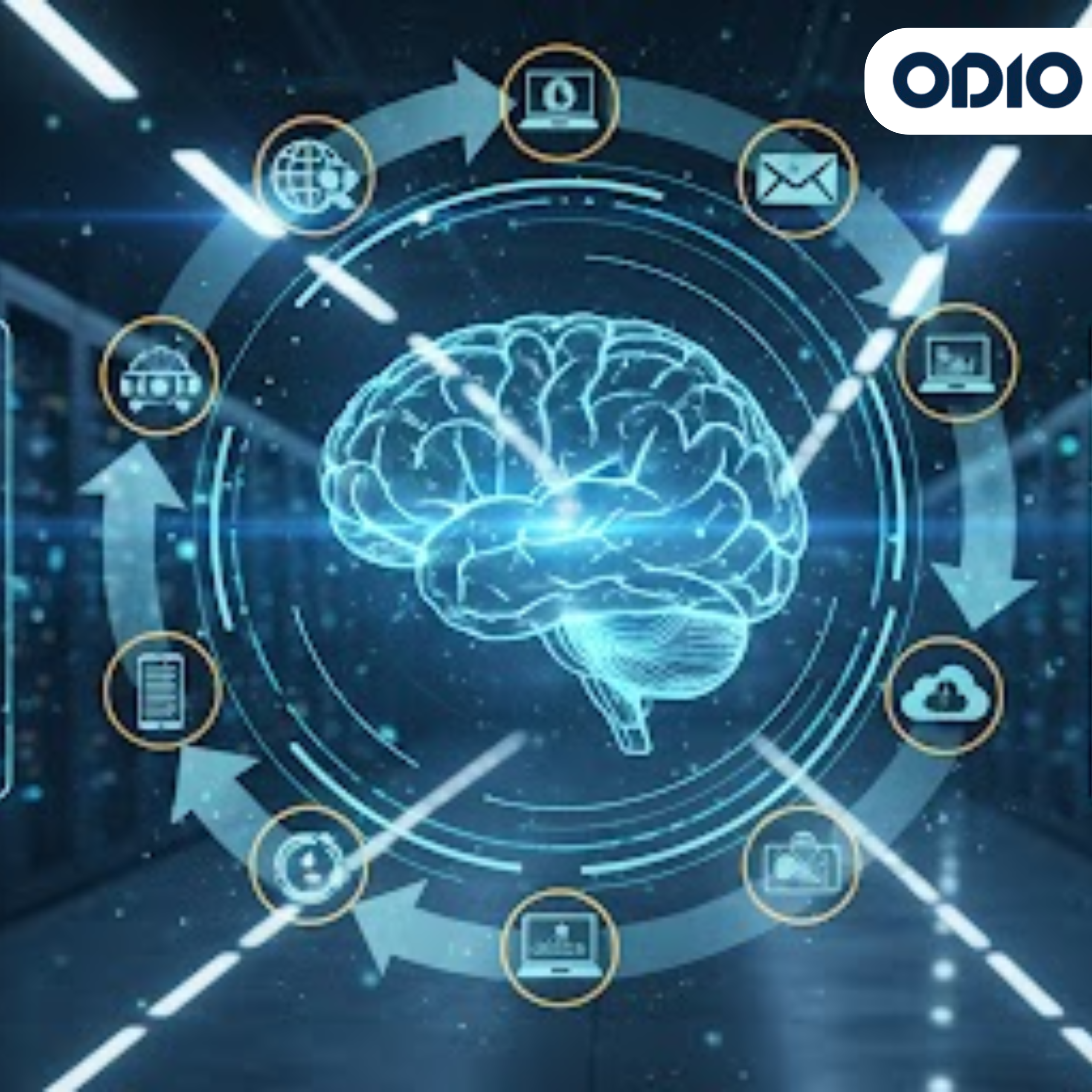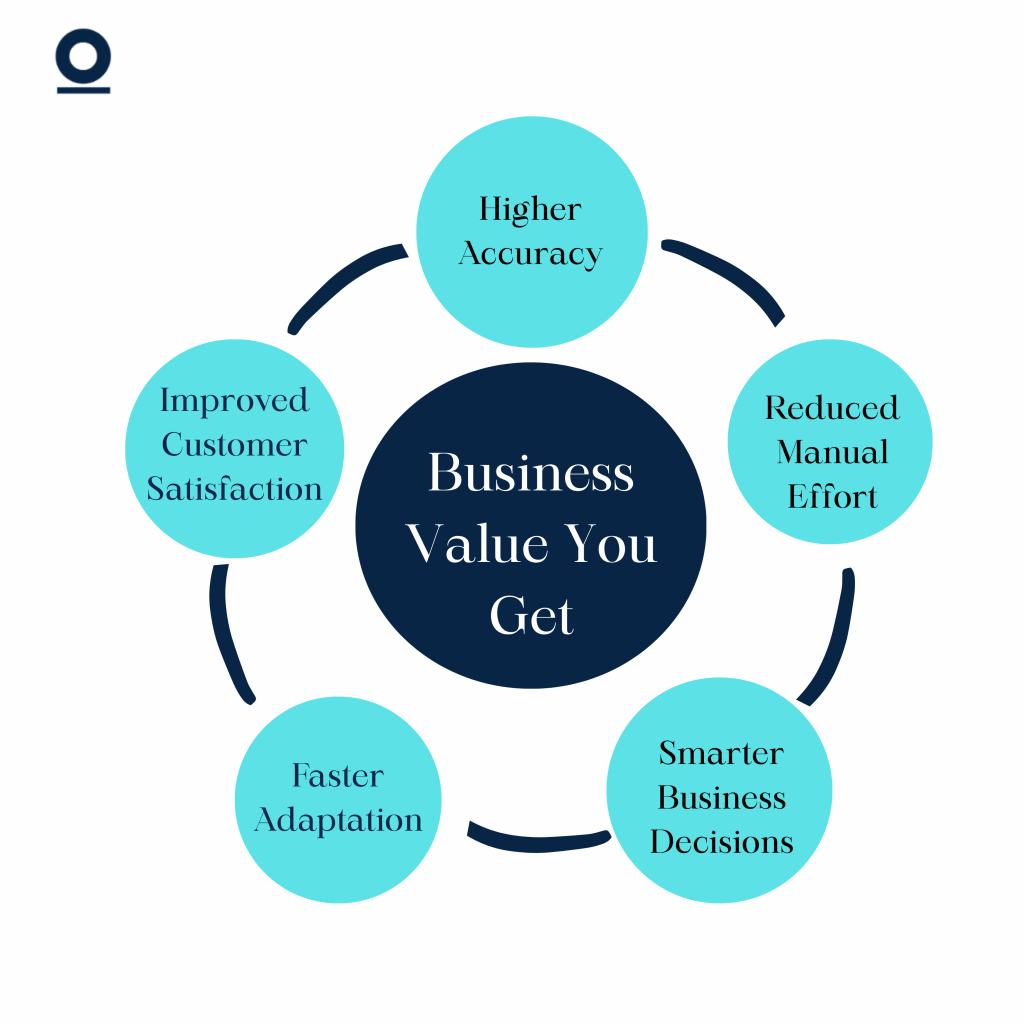
In today’s fast-paced world, businesses leveraging AI face a constant challenge: how to keep their AI systems reliable, precise, and up to date. That’s where continuous learning and feedback loops play a crucial role. At Odio, we believe that the most effective conversational AI doesn’t just learn at deployment, it learns over time, improving via feedback from every interaction. In this post, we explore how feedback loops help AI systems sharpen accuracy, enhance customer outcomes, and maintain trust.
What is Continuous Learning & Feedback Loops?
Continuous learning refers to the process by which AI models keep learning after their initial training phase. This means that instead of being “frozen” in their knowledge, these models adapt as new data, new interactions, and new user feedback become available. A feedback loop is the mechanism by which this adaptation happens: inputs (like user responses, error reports, satisfaction ratings) are fed back into the system to correct mistakes, refine predictions, and improve future performance.
Why Feedback Loops Matter for AI Accuracy
- Correcting Misunderstandings in Real Time
One of the biggest sources of error in conversational AI is misunderstanding user intent, mishearing or misinterpreting what a person means. With feedback loops, Odio’s system can capture cases where users are confused, ask again, or give negative feedback. These are flagged, analysed, and used to update the model so similar errors are less likely in future. - Adapting to Changing User Preferences
Customer language, tone, and expectations evolve. What sounded natural last year might feel odd today. Feedback loops allow AI to adapt: for example, by learning new phrases, slang, or even adjusting for new compliance rules, agents’ scripts, or industry jargon. This keeps the AI’s conversational style current and more human-like. - Reducing Error Propagation
Without continuous feedback, small errors can compound. Suppose one misunderstood phrase is taken as correct, then used as part of the training or internal logic over time, such errors degrade overall performance. Feedback loops help by catching those missteps early and ensuring the correction is fed back into training, reducing error drift. - Improving Measurement and Metrics
Accuracy isn’t just a feel-good metric. It’s measurable via things like First Call Resolution (FCR), customer satisfaction (CSAT), intent matching, compliance rates, and QA scoring. By using feedback loops, Odio is able to monitor these metrics, identify where the AI is underperforming, and then tweak the model accordingly. This turns raw data into actionable insights.
How Odio Implements Feedback Loops
At Odio, continuous learning via feedback is not theoretical, it’s a core part of how our system works. Here are some ways we put it into practice:
- Automated QA & Compliance: Every interaction is monitored, not just a sample. Our system scores conversations against quality and compliance metrics, spotting deviations and feeding them back into model refinements.
- Real-Time Supervisor Assist & Agent Coaching: Supervisors and agents learn from what AI suggests during live calls. When a recommendation or correction is accepted or rejected by a human, that decision becomes data. Over time, the model learns which suggestions work best.
- Omni-Channel Engagement Analysis: Whether it’s voice, chat, email, or social media, Odio captures feedback across all channels. That holistic view provides a richer feedback loop, so the model isn’t biased toward one type of communication.
- Rule-Based Sampling & Unbiased Scoring: Using both human feedback and automated metrics, the system can sample interactions based on rules, review them, and feed findings back into updating scripts, response libraries, or conversational flows.
Challenges & Best Practices
Of course, feedback loops aren’t without challenges. But when done right, the benefits far outweigh the difficulties.
- Noise & Inconsistent Feedback: Not every feedback is clean. Sometimes user feedback is vague, contradictory, or even incorrect. It’s important to filter, validate, and weigh feedback properly.
- Latency of Updates: If feedback loops are slow (e.g. only reviewed monthly), the AI lags behind real user behavior. The goal is near-real-time or frequent updates.
- Balance Between Automation & Human Oversight: Too much automation without checks can lead the model astray. Odio balances agent-in-the-loop and automated processes to keep accuracy high.
- Data Privacy & Compliance: Collecting feedback involves data. Ensuring user privacy, anonymizing feedback when needed, and complying with regulations (GDPR, etc.) is essential.
The Tangible Benefits: What Your Business Gains
When feedback loops are implemented well, the business impact is real:
- Higher Accuracy in detecting user intent, responding correctly, and avoiding misunderstandings
- Improved Customer Satisfaction and reduced frustration, because AI “gets it right” more often
- Faster Adaptation to new trends, new product features, regulation changes, or language shifts
- Reduced Manual Effort in fixing mistakes, retraining agents, or managing escalations

Conclusion
Continuous learning powered by strong feedback loops is more than just a technical necessity-it’s what separates good AI from great AI. By systematically capturing, analysing, and acting upon feedback, Odio ensures our conversational AI becomes more accurate, more responsive, and more aligned with what your customers expect. These feedback mechanisms are essential to building trust in AI-powered interactions and delivering superior business outcomes.

